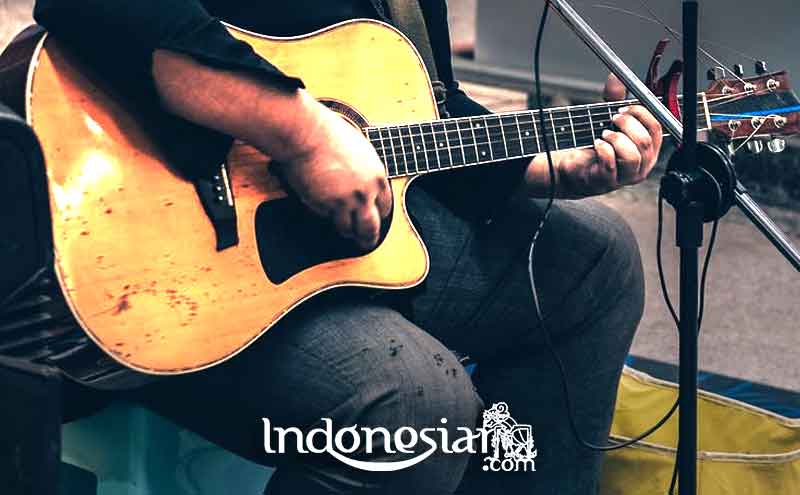according to most historical sources the Debus Banten art began in the 16th century during the reign of Sultan Maulana Hasanuddin (1532-1570). Debus began to be known in Banten society as a way of spreading Islam. Quoted from various sources, Debus consists of several versions.
The second version of Debus comes from the Middle East called Al-Madad in the 13th century AD and was introduced to this Banten area as one of the ways of spreading Islam at that time.
The third version of Debus comes from the teachings of the Rifa’iyah Nuruddin Ar-Raniry tarekat to Aceh and entered Banten in the 16th century AD by the guards of Cut Nyak Dien (1848-1908 AD) who was exiled by the Dutch government to Sumedang. One of the bodyguards who controlled Debus introduced and taught him to the people of Banten.
Tarekat Rifa’iyah teaches joy when meeting Allah SWT or called epiphany, now when someone has reached the peak of the epiphany he will be immune to any sharp object. The common thread of the three versions is the Debus art as a method of spreading Islam in the Banten area at that time.
Debus in Arabic means an iron staff with a pointed tip with a round tip. For some ordinary people Debus’s artistry is indeed extreme. At the present time, Debus as a martial art is often shown for cultural events, traditional ceremonies or entertainment.
Today the Debus art is a combination of dance, voice and mysticism with magical nuances. Because it was a means of spreading Islam in ancient times, this art began with the chanting of prayers and praises to the Prophet Muhammad.
Debus is a martial art that demonstrates extraordinary human abilities. For example, immune to sharp weapons, immune to hard water and others.
This art originated in the 16th century, during the reign of Sultan Maulana Hasanuddin (1532-1570). At the time of Sultan Ageng Tirtayasa (1651-1692) Debus became a tool to pump up the fighting spirit of the people of Banten against the Dutch colonialists at that time. Debus arts that are often shown include:
- -Stabbing the stomach with a spear or other sharp weapon without getting injured
- Slice parts of the body with a knife or cleaver
- Eat fire
- Inserting a wire needle into the tongue, cheek skin or other limb until it is redeemed without bleeding
- Dousing the body with hard water until the clothes worn are crushed but the skin remains intact
- Frying eggs on the head
- Burn the body with fire
- Climbing or occupying a sharp cleaver arrangement
- Rolling on glass or glass chips
Debus in Arabic means an iron staff with a pointed tip with a round tip. For some ordinary people, Debus’ art is indeed very extreme. At the present time, Debus is a martial art that is often shown for cultural events or traditional ceremonies.
Debus is better known as the original art of the Banten people, which may have developed since the 18th century. According to most historical sources, Debus Banten art began in the 16th century during the reign of Sultan Maulana Hasanuddin (1532-1570).
Debus began to be known to the people of Banten as a way of spreading Islam. However, there are also those who say that Debus came from the Middle East, named Al-Madad, who was introduced to the Banten area as a way of spreading Islam at that time. Others said that Debus came from the Rifa’iyah Tarekat Nuruddin al-Raniri who entered Banten by Cut Nyak Dien’s guards (1848-1908).
Today Debus modern figures are Tubagus Barce Banten or Abah Barce, reportedly he has always been a spiritual advisor to the political elite and can cure various diseases that the medical world cannot cure. He is also very instrumental in introducing Debus to foreign countries such as Australia, Japan, the United States, Germany, Malaysia, the Netherlands and Spain.
According to the man who received an honorary doctorate from the University of Amsterdam in the Netherlands in 1985, Debus had nothing to do with witchcraft or magic because it was an act of Shirk (associating partners with Allah) and he emphasized that Debus was used in ancient times to fight against the Dutch colonialism.
Apart from that, all of Debus’ arts have the potential to raise the Banten tourism industry in the eyes of the national and world. This art attraction is a special attraction for tourists and local tourists. So, have you ever seen and been interested in Debus art attractions? oh yes, such attractions must be performed by professional people who have been trained in the field of debus.
Source : titiknol






























